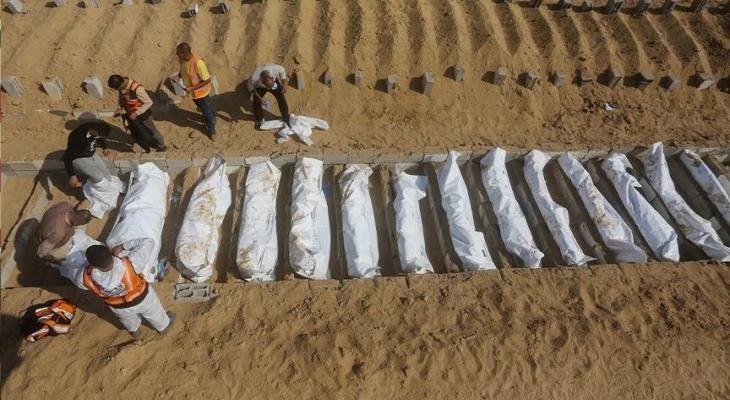Bodies in advanced stages of decomposition: Lack of laboratories hinders identification of martyrs in Gaza
The humanitarian crisis in the Gaza Strip is worsening as a result of the genocide perpetrated by the Zionist enemy over the past two years.
The Gaza Strip is experiencing a new humanitarian tragedy with the rising number of Palestinian martyrs whose bodies have been returned by the Israeli enemy. These bodies are facing immense difficulties in identification due to decomposition, torture, and animal scavenging, further exacerbating the suffering of the families of the missing.
Mahmoud Ashour, spokesperson for the Criminal Evidence Department in Gaza, told Sanad News Agency on Monday that the number of bodies received through the International Committee of the Red Cross has reached 330, and only 99 have been identified so far, and even then, with great difficulty.
Ashour pointed out that many of the bodies are in advanced stages of decomposition, some have been scavenged by animals, and there are signs of torture that obscure the martyrs’ features and hinder the identification process.
He added that identifying bodies currently relies on rudimentary methods such as visual inspection and distinguishing marks, which is insufficient. He stressed the need for fully equipped forensic laboratories to conduct DNA testing.
He emphasized the urgent need to establish a comprehensive database of all missing persons in the Gaza Strip to compare DNA samples from remains and conduct accurate matching. He affirmed that the relevant committee is often unable to assist families due to a lack of resources.
The spokesperson for the forensic evidence department in Gaza appealed to the International Committee of the Red Cross and other international organizations to pressure Israel to allow the entry of materials and equipment necessary to establish a fully equipped forensic laboratory within Gaza, with the aim of finding effective solutions to the issue of missing persons.
He noted that the number of unidentified bodies being buried after long periods of waiting is steadily increasing, exacerbating the suffering of the families awaiting their loved ones.
The Ministry of Health in the Gaza Strip previously launched an online link containing selected photos “that respect the dignity of the deceased and do not infringe on their privacy,” with the aim of giving families the opportunity to identify their loved ones remotely before they are taken to hospitals.
The Ministry confirmed that the Israeli occupation authorities have not provided the International Committee of the Red Cross with lists of names or identities of the bodies.
It noted that some bodies bear gunshot wounds to the chest and head, while others have shrapnel wounds and fractures to the skull and limbs. Additionally, some bodies are decomposed, and others are frozen, complicating the examination and documentation process.
Due to a lack of sufficient refrigeration facilities, the Ministry of Health in Gaza resorted to burying the unidentified bodies in unmarked graves, while retaining the photos in anticipation of any future documentation or matching efforts.
With American and European support, the Israeli enemy army has committed genocide, siege and starvation crimes in the Gaza Strip since October 7, 2023, resulting in the martyrdom of 69,756 Palestinian civilians, most of them children and women, and the injury of 170,946 others, as of yesterday, Sunday, in a non-final tally, as thousands of victims are still under the rubble and in the streets that ambulance and rescue crews cannot reach.

